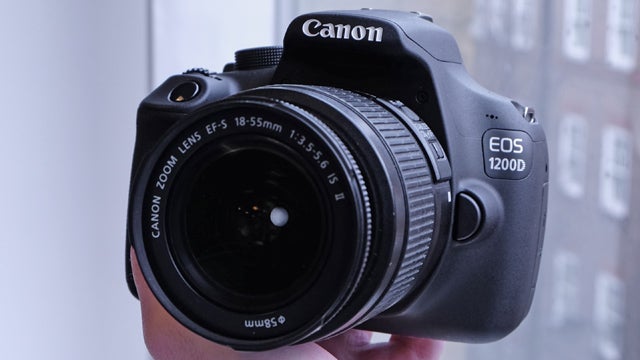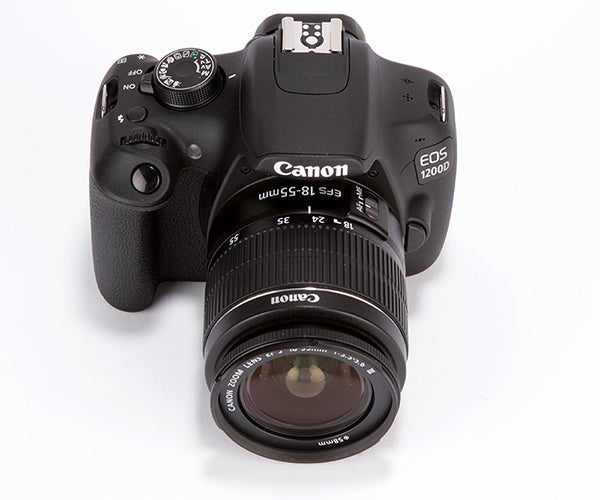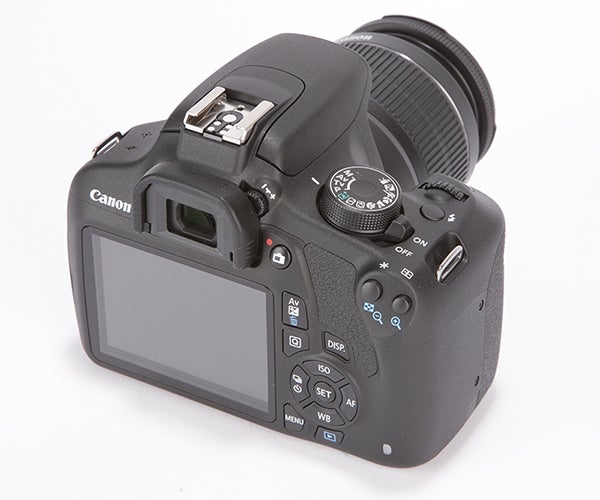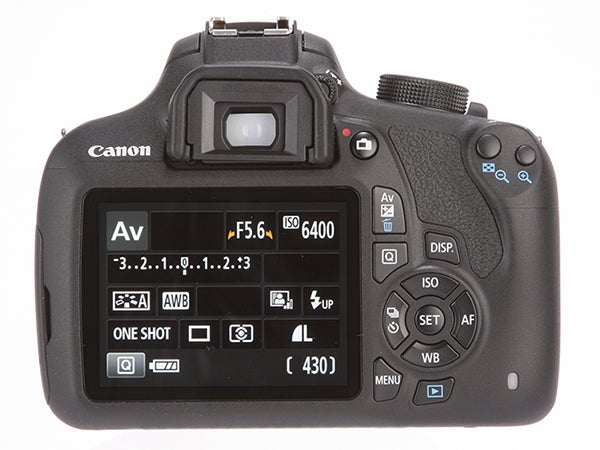Canon EOS 1200D Review - Design and Performance Review
Design and Performance
Cheap DSLRs just got cheaper

Sections
- Page 1 Canon EOS 1200D Review
- Page 2 Design and Performance Review
- Page 3 Image Quality and Verdict Review
Canon EOS 1200D: Design
Honestly, you could be forgiven for being a little underwhelmed on first picking up the 1200D. The carbon-fibre reinforced polycarbonate body feels plasticky, and the camera’s diminutive nature doesn’t help dispel the notion that you’re holding a toy.
Thankfully, the construction really is solid, much more so than it first appears, though you wouldn’t expect much else from Canon. The 1200D strikes an excellent balance between durability and portability.

As you might expect, then, the 1200D is a pleasure to handle and shoot with. It sits well in the hand and even with the small size you never feel in danger of losing purchase or like you’re fiddling with something that’s really too small to handle. The thumb grip on the rear has been stuck in just the right spot making it easy and comfortable to hold the camera even for extended periods.
The number of buttons has been kept to a minimum, as befitting a camera designed for the first-time user who might be intimidated by a raft of controls. In the same vein, all buttons are big and friendly, with clear labels. The D-pad controls AF-modes, ISO, drive modes and white balance, while menu, quick menu, exposure compensation, payback and display each have their own buttons nearby.
Despite the tepid first impressions, the 1200D proves to be an adroitly designed little camera that new users should be able to quickly and painlessly get comfortable with using.
Buy Now: Canon EOS 1200D at Amazon.co.uk (£278) | Amazon.com ($399)
Canon EOS 1200D: Performance
While the 460k-dot resolution of the 1200D’s LCD may sound a little low (because it is), the screen actually proves to be a very well-engineered unit. The refresh rate is sprightly, the viewing angle is good, and even in bright sunlight it’s clearly readable.
In terms of autofocus, the 1200D sports a similarly somewhat low nine phase detect AF points, only one of which is a cross-type sensor for even more accurate focussing – it’s positioned in the middle of the frame.

In practice, the autofocus proves something of a mixed bag. Using the viewfinder (i.e. using the phase detection AF) in bright light it performs as well as you’d expect: smart and snappy even with fast challenging subjects. You could bring the 1200D along to a sports game or a wildlife shoot and expect it to hold up, particularly if you’re generally aiming to have the subject in the middle of the frame. It acquits itself well in low light too – there’s a drop-off in AF speed, naturally, but it’s fractional.
However, focusing in live view (falling back to slower contrast detection AF) is another matter. Unless you’re in the very best conditions then using the AF in live view will probably turn into a bit of a nightmare. In low light especially it’s sluggish in the extreme and often tends to hunt for focus. Don’t even bother trying for any subject with a bit of pace to it.
This isn’t to say that live view is worthless however. If you’re out on a bright sunny day shooting something that isn’t about to run off – a flower, let’s say – you can tap the zoom button to enlarge an area by a factor of five or ten in order to focus on a very precise spot.

The full 1080 HD (1920×1080) video on the 1200D is very welcome, as is the option to shoot 720 HD video at higher frame rates of 60 or 50fps – great for relatively slow motion.
Amateur videographers should note however, that the 1200D lacks an external microphone port for capturing high quality audio.
The other feature of note on the 1200D is the free EOS Companion app Canon released for Android and iOS.
Designed to teach the basics of photography and camera operation, it’s actually a very clever device for getting users over the initial intimidation hump that so many experience when confronted with a new camera. In this regard, it’s a fantastic success. With exercises, video tutorials and three-dimensional diagrams, it’s helpful and innovative.


